‘Stone Club Head Of Mesilim’ Probably The Most Powerful Sumerian Ruler At That Time
A. Sutherland - AncientPages.com - In 1881, an intriguing artifact known as the "stone club head of Mesilim" was unearthed at Tall Luh (Tello) site, covering the ruins of the Sumerian city of Girsu.
The artifact is covered with an inscription of Mesilim, king of the Sumerian city of Kish, and the inscription informs in the archaic script:
This mace-head depicts a lion-headed eagle, symbol of Ningirsu the patron god of Lagash and Girsu, Sumer. Image credit: Wikipedia Commons
"Mesilim, king of Kish, builder of the temple of Ningirsu, brought [this mace head] for Ningirsu, Lugalshaengur [being] prince of Lagash."
Sumerian king of Kish, Mesilim, who ruled during the Early Dynastic III" period (c. 2500–2330 BC), was one of the earliest historical figures of Sumer. His existence and involvement in arbitration work to settle a dispute between the city-state of Lagash and neighboring Umma and set a new frontier between these two cities was confirmed by votive inscriptions from Lagash and Umma.
The limestone head is 19 cm high (7.5 in) and 16 cm (6.3 in) in diameter and has its upper surface decorated with a mythical bird Anzu, in the form of a lion-headed eagle, a symbol of the storm cloud and emblem of Ningirsu, guardian of the city's wealth. Anzu clutches in its talons six rearing lions.
Left: Stone mace head 2400 BC Lagash. Source; Right: Stone Mace Head, Sippar 2500 BC. British Museum, London
The six lions accompany the bird Anzu, which represents a symbol of Ningirsu, the god of the welfare of the city Girsu. Its depictions were found on many other monuments from the Sumerian city, such as a tripod silver vase dedicated by Entemena, king of Lagash, to god Ningirsu or a votive plaque dedicated to Dudu, Ningirsu's high priest.
In Mesopotamia, soldiers used spears, bows and arrows, daggers, maces, and shields to fight off invading armies and wage war against neighboring city-states.
The mace appeared at the end of the fourth millennium BC and was a weapon of war and a symbol of power. It was a type of club or virge that used a heavy head on the end of a handle to deliver powerful blows.
Usually made of metal or stone, mace heads have been unearthed in Sumerian temples. This weapon was used worldwide in prehistory, antiquity, the Middle Ages, and even the Modern Era.
The "Stone Club Head Of Mesilim" is stored in the Louvre Museum today.
Written by – A. Sutherland AncientPages.com Staff Writer
Updated on March 2, 2023
Copyright © AncientPages.com All rights reserved. This material may not be published, broadcast, rewritten or redistributed in whole or part without the express written permission of AncientPages.com
Expand for referencesMore From Ancient Pages
-
 Famous Viking Warrior Eric “Bloodaxe” Haraldsson: King Of Norway
Featured Stories | Sep 29, 2016
Famous Viking Warrior Eric “Bloodaxe” Haraldsson: King Of Norway
Featured Stories | Sep 29, 2016 -
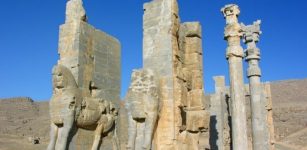 Discovery Of 1500-Year-Old Celestial Observatory Dated To Sassanian Empire
Archaeology | Mar 16, 2017
Discovery Of 1500-Year-Old Celestial Observatory Dated To Sassanian Empire
Archaeology | Mar 16, 2017 -
 Mystery Of The Ancient Lost Megalithic City Of Nhambiquaras And The Curious Roman Figurine
Featured Stories | Mar 4, 2022
Mystery Of The Ancient Lost Megalithic City Of Nhambiquaras And The Curious Roman Figurine
Featured Stories | Mar 4, 2022 -
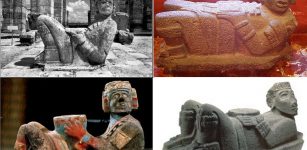 Image Of The Day: Chacmool – Famous Ancient Statue Of Pre-Columbian Mesoamerica
Image Of The Day | Sep 10, 2015
Image Of The Day: Chacmool – Famous Ancient Statue Of Pre-Columbian Mesoamerica
Image Of The Day | Sep 10, 2015 -
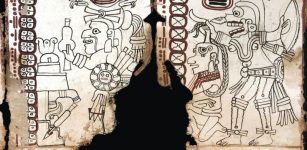 Once Looted Nearly 1,000-Year-Old Maya Text Is Authentic – Mexican Experts Say
Archaeology | Sep 1, 2018
Once Looted Nearly 1,000-Year-Old Maya Text Is Authentic – Mexican Experts Say
Archaeology | Sep 1, 2018 -
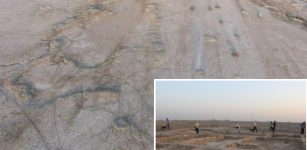 Large 4,000-Year-Old Sumerian Port Discovered In The Desert In Iraq
Archaeology | Apr 4, 2018
Large 4,000-Year-Old Sumerian Port Discovered In The Desert In Iraq
Archaeology | Apr 4, 2018 -
 Samurai – Powerful Skilled Warriors Who Loved Music, Art And Poetry
Featured Stories | Dec 9, 2017
Samurai – Powerful Skilled Warriors Who Loved Music, Art And Poetry
Featured Stories | Dec 9, 2017 -
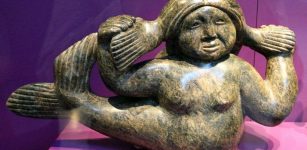 Sedna: Inuit Goddess Sacrificed By Selfish Father Fearing For His Own Life
Featured Stories | Jan 7, 2020
Sedna: Inuit Goddess Sacrificed By Selfish Father Fearing For His Own Life
Featured Stories | Jan 7, 2020 -
 Altai Mountains Were Home To Porcupines 30,000 Years Ago
Archaeology | Mar 14, 2017
Altai Mountains Were Home To Porcupines 30,000 Years Ago
Archaeology | Mar 14, 2017 -
 Intriguing Study Reveals Genes And Languages Aren’t Always Found Together – What Does This Say About Our Ancestors?
Archaeology | Nov 22, 2022
Intriguing Study Reveals Genes And Languages Aren’t Always Found Together – What Does This Say About Our Ancestors?
Archaeology | Nov 22, 2022 -
 Cacao Originated 1,500 Years Earlier Than Previously Thought And Comes From South America
Archaeology | Oct 30, 2018
Cacao Originated 1,500 Years Earlier Than Previously Thought And Comes From South America
Archaeology | Oct 30, 2018 -
 Museum Classifies Roman Emperor Elagabalus As Trans – But Modern Labels Oversimplify Ancient Gender Identities
Featured Stories | Nov 28, 2023
Museum Classifies Roman Emperor Elagabalus As Trans – But Modern Labels Oversimplify Ancient Gender Identities
Featured Stories | Nov 28, 2023 -
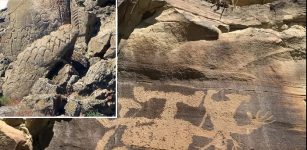 12,000-Year-Old Rock Art In North America – Dating Petroglyphs In The American West
Archaeology | Mar 4, 2022
12,000-Year-Old Rock Art In North America – Dating Petroglyphs In The American West
Archaeology | Mar 4, 2022 -
 Ancient Roman Government Structure And The Twelve Tables
Ancient History Facts | Jan 18, 2016
Ancient Roman Government Structure And The Twelve Tables
Ancient History Facts | Jan 18, 2016 -
 On This Day In History: Ruler Of Palenque Yohl Ik’nal Was Crowned – On Dec 23, 583
News | Dec 23, 2016
On This Day In History: Ruler Of Palenque Yohl Ik’nal Was Crowned – On Dec 23, 583
News | Dec 23, 2016 -
 Ancient Secret Tunnel Discovered Beneath The Pyramid Of The Moon In Mexico’s Teotihuacan
Archaeology | Jul 8, 2017
Ancient Secret Tunnel Discovered Beneath The Pyramid Of The Moon In Mexico’s Teotihuacan
Archaeology | Jul 8, 2017 -
 Fossil Study: Coelacanths Thrived In Switzerland After A Mass Extinction
Fossils | Jul 28, 2023
Fossil Study: Coelacanths Thrived In Switzerland After A Mass Extinction
Fossils | Jul 28, 2023 -
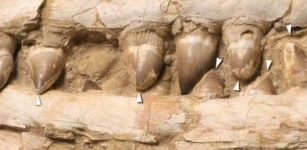 ‘Sea Monsters’ Were Real Millions Of Years Ago: New Fossils Tell About Their Rise And Fall
Featured Stories | Oct 8, 2022
‘Sea Monsters’ Were Real Millions Of Years Ago: New Fossils Tell About Their Rise And Fall
Featured Stories | Oct 8, 2022 -
 Queen Mama Ocllo: Legendary Wife Of Sapa Inca Manco Capac In Beliefs Of Andean People
Featured Stories | May 6, 2020
Queen Mama Ocllo: Legendary Wife Of Sapa Inca Manco Capac In Beliefs Of Andean People
Featured Stories | May 6, 2020 -
 Yomi – Kingdom Of The Dead In Japan’s Native Shinto Religion
Featured Stories | Jun 7, 2021
Yomi – Kingdom Of The Dead In Japan’s Native Shinto Religion
Featured Stories | Jun 7, 2021


